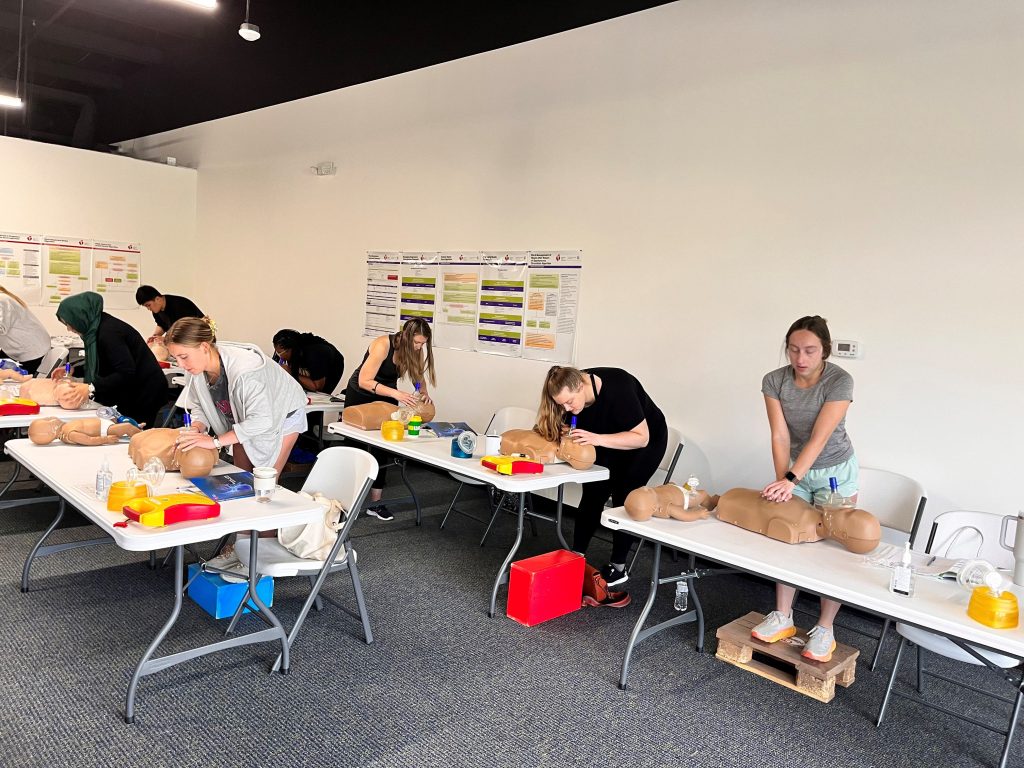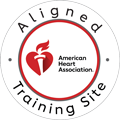When every second counts, the quality of CPR can make the difference between life and death. Chest compressions are at the heart of effective adult CPR, and using the correct technique is essential for increasing a person’s chances of survival during cardiac arrest. High-quality CPR, which includes precise chest compression methods, ensures blood continues to flow to vital organs until advanced care is available. Following current American Heart Association (AHA) guidelines is crucial for anyone who wants to perform CPR correctly and confidently. Whether you’re a healthcare provider, first responder, or concerned citizen, understanding how to deliver chest compressions the right way could save a life.

Compression Rate for Adults: Getting the Numbers Right
One of the most important elements of CPR is the compression rate. According to the AHA, adult chest compressions should be delivered at a rate of 100 to 120 compressions per minute. This guideline wasn’t always the standard. Earlier versions of CPR protocols allowed for slower rates, but evolving scientific evidence showed that maintaining blood flow to the brain and heart required a faster tempo. Rates below 100 compressions per minute can reduce the chances of survival, while compressions faster than 120 per minute often result in inadequate depth and incomplete chest recoil. Sticking within the recommended range ensures that compressions are both fast enough and effective in maintaining circulation.
Is CPR 15 or 30 Compressions?
Many people also wonder about the compression-to-ventilation ratio. Is CPR 15 or 30 compressions per cycle? For adults, the current recommendation is 30 compressions followed by 2 rescue breaths. This 30:2 ratio is standard whether you’re performing CPR alone or with another trained provider. It replaced the older 15:2 ratio after research demonstrated that longer compression sequences before ventilation led to better blood flow and higher survival rates. These improvements were based on clinical trials and data from emergency response systems. However, in certain pediatric or two-rescuer child scenarios, a 15:2 ratio may still apply. That’s why understanding the context and patient type is essential for choosing the correct approach.
Ratio for 1-Person CPR
In single-rescuer situations, maintaining the 30:2 ratio is even more critical. Performing CPR alone means juggling both compressions and breaths without any support. While this can be physically demanding, it’s vital to continue without unnecessary delays. Each pause in compressions decreases the effectiveness of circulation, so rescuers should aim to minimize breaks. In some emergencies, especially if a rescuer is untrained or unable to give breaths, compression-only CPR is a valid and potentially life-saving alternative. The AHA acknowledges that hands-only CPR can be effective for adult sudden cardiac arrest, especially when performed immediately and consistently.
Correct Tempo for CPR
Keeping the right tempo during CPR can be a challenge, especially in high-stress situations. Fortunately, there are practical ways to stay on beat. A popular and effective method is using the song “Stayin’ Alive” by the Bee Gees, which clocks in at about 104 beats per minute—right in the target zone. Other songs with a similar tempo, like “Crazy in Love” or “Dancing Queen,” can also work. In clinical settings, metronomes or mobile apps can guide rescuers to maintain the proper rhythm. These tools reinforce the importance of consistent, evenly timed compressions, which contribute to high-quality CPR.
The Golden Rule of CPR
The golden rule of CPR sums up the fundamentals of effective chest compressions: “Push hard, push fast, allow complete chest recoil.” For adults, the recommended compression depth is 2 to 2.4 inches. Pushing with too little force won’t generate adequate blood flow, while going too deep could cause injury. Equally important is allowing the chest to fully recoil after each compression. This step helps the heart refill with blood and prepares it for the next pump. Additionally, minimizing interruptions—pauses in compressions longer than 10 seconds—can drastically improve the likelihood of successful resuscitation. Continuous, high-quality compressions form the backbone of any CPR effort.
Call Us Now
Get the Best CPR Class in Tampa Today!
Common Mistakes and How to Avoid Them
Unfortunately, common mistakes during CPR can compromise its effectiveness. One frequent issue is not pressing deeply enough or compressing too forcefully, leading to poor blood circulation or physical harm. Another error is failing to let the chest fully recoil, which limits the heart’s ability to refill. Incorrect hand placement—too low, too high, or off-center—can reduce effectiveness and increase injury risk. Long pauses between compressions, often caused by uncertainty or fatigue, can also reduce survival chances. That’s why rotating rescuers every two minutes when possible is essential, especially in team settings, to combat fatigue and maintain compression quality.
Keeping Skills Current: Certification and Training
To stay proficient, regular training and recertification are crucial. Skills fade over time, and guidelines are regularly updated to reflect new research. At CPR Classes Tampa, students can choose from a variety of American Heart Association-approved programs, including Basic Life Support (BLS), Advanced Cardiovascular Life Support (ACLS), and Pediatric Advanced Life Support (PALS). Courses are designed for healthcare providers and lay responders alike. Emphasis is placed on hands-on learning, stress-free environments, and real-world practice scenarios that build confidence. Whether you’re getting certified for the first time or renewing an existing certification, CPR Classes Tampa provides the tools you need to succeed.
Conclusion
In conclusion, mastering correct chest compression techniques is at the heart of effective adult CPR. Following AHA guidelines on compression rate, depth, and ratio can dramatically improve survival outcomes during cardiac arrest. Whether you’re working alone or in a team, maintaining the proper tempo, minimizing interruptions, and avoiding common mistakes will help you deliver high-quality CPR when it matters most. Certification and continued education are key components of readiness, and CPR Classes Tampa makes it easy to stay prepared with expert-led training programs and flexible scheduling.
About CPR Classes Tampa
CPR Classes Tampa is an official American Heart Association training site offering a wide range of life-saving courses, including BLS, ACLS, PALS, CPR, and First Aid. With a commitment to hands-on, stress-free instruction, CPR Classes Tampa equips students with the skills and confidence to respond effectively in emergencies. Ready to get certified or renew your CPR training? Visit CPR Classes Tampa online to view upcoming courses and register today. Taking the time to learn proper CPR techniques could one day make you the difference between life and death.


